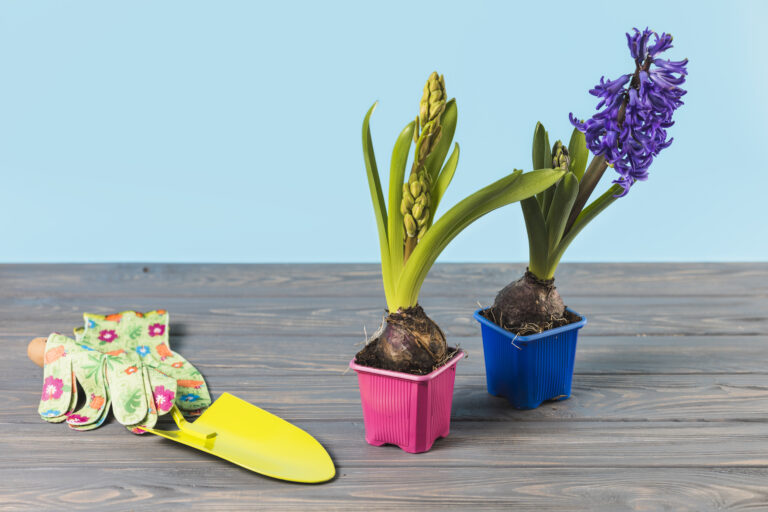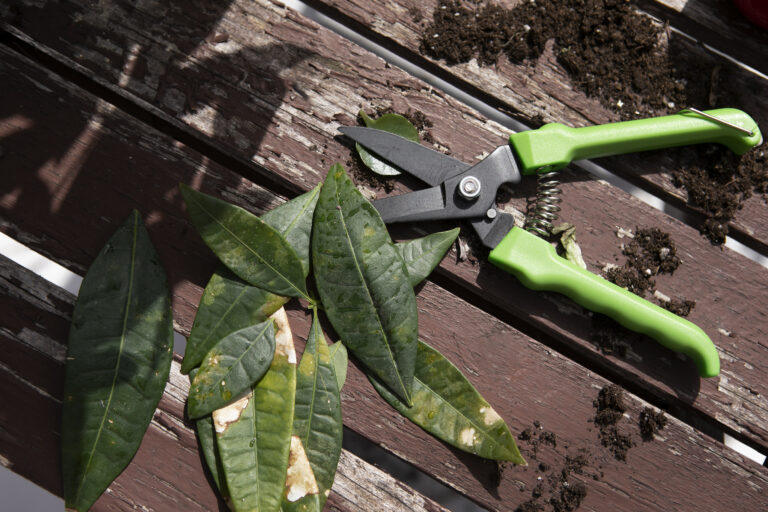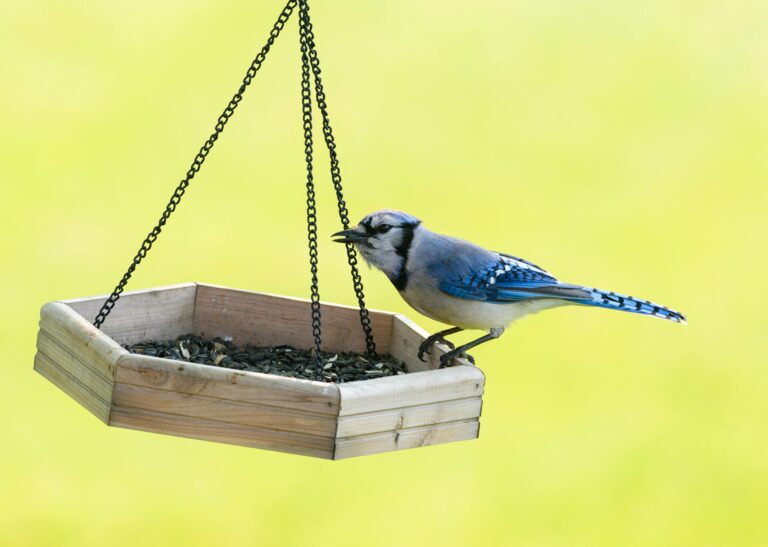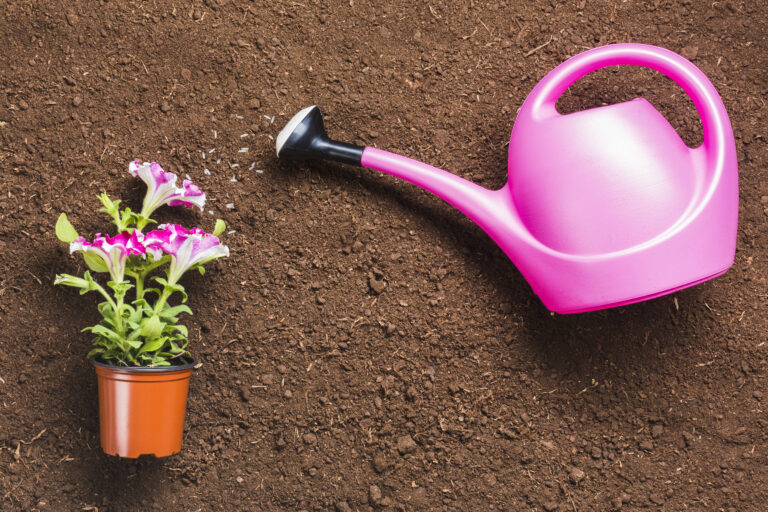5 Best Tools to Remove Unwanted Grass and Plants from Garden
For many gardeners, the sight of unwanted grass and weeds is their biggest headache. These persistent invaders compete with your cultivated plants for vital resources like water, sunlight, and nutrients, often choking out desired foliage and flowers.
Beyond the aesthetic impact, unchecked weeds can also compromise soil health by depleting nutrients and harboring pests or diseases. They make a garden look messy and neglected, and manual removal can be back-breaking work.
Fortunately, you don’t have to surrender your garden to the weeds. This guide reviews five of the best tools on the market that are practical, durable, and effective at tackling this common gardening challenge.
From ergonomic hand tools to stand-up welders that save your back, these tools will make the job of maintaining a beautiful, healthy garden much easier.
The Best Tools for Removing Unwanted Grass and Plants
1. Stand-Up Weed Puller

This long-handled tool is an ergonomic solution that allows you to remove weeds from a standing position, eliminating the need to bend or kneel. Its key feature is a set of claws or prongs at the base, which are operated by an ergonomic foot pedal.
The design allows you to position the claws over a weed, press down on the pedal to drive the claws into the soil around the weed’s root, and then pull back on the handle to extract the entire plant.
2. Hori Hori Garden Knife

A versatile and traditional Japanese gardening knife, the Hori Hori is a multipurpose tool with a wide, sturdy blade. Its name is derived from the Japanese word “horu,” meaning “to dig.” The tool features a serrated edge on one side and a sharp edge on the other, allowing it to perform a variety of tasks from weeding and digging to transplanting.
3. Oscillating Hoe (Stirrup Hoe)

The oscillating hoe, also known as a scuffle hoe, has a unique stirrup-shaped blade that pivots back and forth with a push-and-pull motion. This design allows it to slice weeds just below the soil surface, quickly clearing large areas with minimal effort.
4. CobraHead Weeder

This unique hand tool features a single, curved, and pointed blade made of tempered steel. The distinctive “cobra head” shape is designed to cut through tough soil and hard-to-reach weeds with ease, making it an excellent all-purpose weeder and cultivator.
5. Japanese Weeding Sickle (Niwaki)

The Japanese weeding sickle, or Niwaki, is a lightweight, single-bladed tool with a curved, razor-sharp edge. It is designed for precise, delicate weeding, allowing you to scrape and slice weeds at the base without disturbing surrounding plants.
How to Choose the Right Weed Removal Tool
Selecting the perfect weed removal tool is about more than just finding one that looks effective. The right choice depends on a variety of factors, from your physical comfort to the specific type of weeds you’re tackling. By considering these key elements, you can find a tool that makes weeding less of a chore and more of a satisfying part of your gardening routine.
1. Ergonomics & Comfort
Your body will thank you for prioritizing ergonomics. Gardening, especially weeding, can be hard on the back, knees, and hands.
- Handle Design: Look for tools with comfortable, cushioned grips that reduce hand and wrist fatigue. Ergonomic hand tools are designed to fit the natural curve of your hand, providing a secure and comfortable grip.
- Tool Length: A long-handled stand-up weeder is a lifesaver for those with back or knee problems, allowing you to remove weeds without bending over. For more precise work in tight spaces, a short-handled hand weeder is a better choice, but be prepared to get on your knees.
- Weight: A lightweight tool is easier to maneuver for extended periods, but a heavier, well-balanced tool can provide the leverage needed for tougher jobs.
2. Durability & Material
The material a tool is made from directly impacts its longevity and performance. Investing in a high-quality tool means it will last for years, saving you money and frustration in the long run.
- Blades and Heads: Tools with blades or heads made from high-carbon steel are ideal for digging and cutting, as they are strong and can hold a sharp edge. Stainless steel is a popular choice for its rust resistance, making it great for tools used in wet soil. Look for forged or tempered steel, as these are stronger than stamped alternatives.
- Handles: Wood, especially ash or hickory, is a traditional choice for handles due to its strength and flexibility. Fiberglass handles are even stronger and less likely to break, while some metal handles are also very durable. Ensure the connection between the head and the handle is solid to prevent it from loosening over time.
3. Type of Weed Problem
The best tool for the job is dictated by the weeds themselves.
- Deep-Rooted Weeds: For weeds like dandelions and thistles that have a long, stubborn taproot, a tool designed to remove the entire root is essential. Stand-up weed pullers and hand weeders with forked tips are excellent for this, as they grip and lift the root out of the ground, preventing regrowth.
- Shallow Weeds: For young, shallow-rooted weeds in a large area, a stirrup hoe (oscillating hoe) is the most efficient choice. Its slicing motion cuts weeds just below the soil surface, quickly clearing a large patch without disturbing the soil deeply.
- Weeds in Tight Spaces: A Hori-Hori knife or a Japanese weeding sickle is perfect for precision weeding in flower beds, between pavers, or in rock gardens, where a larger tool would damage desirable plants.
4. Manual vs. Power Tools
The choice between a manual and a power tool depends on the scale of your weeding problem and your personal preference.
- Manual Tools: Hand weeders, weed pullers, and hoes are non-motorized, providing a more hands-on and precise approach. They are generally more affordable, require minimal maintenance (cleaning and sharpening), and are completely eco-friendly. They are ideal for smaller gardens and for gardeners who enjoy the physical and tactile nature of the work.
- Power Tools: A string trimmer or brush cutter, while not a dedicated weeding tool, is effective for clearing large areas of overgrown weeds. They save significant time and effort but are not suitable for precision work around plants. They are more expensive, require fuel or electricity, and can be noisy and less eco-friendly due to their emissions.
5. Eco-Friendly Gardening
Choosing the right tool is a key part of an eco-friendly approach to gardening. By opting for a manual tool, you avoid the need for chemical herbicides that can harm soil health and pollinators. Hand-pulling and using a mechanical weeder are the most sustainable ways to manage weeds, as they provide a targeted solution without introducing harmful substances into your garden ecosystem. They are also a great way to stay active and get up close with your plants, contributing to a healthier environment from the ground up.
Tips for Using Weed Removal Tools Effectively
Having the right tool is only half the battle; knowing how to use it effectively can make all the difference in the world. By following these simple tips, you can make your weeding sessions more productive, less strenuous, and better for your garden in the long run.
1. Water the Soil Before You Start
This is perhaps the most important tip for anyone who hand-weeds. Trying to pull weeds from dry, compacted soil is a frustrating and often fruitless effort. The roots will snap, leaving a piece behind to regrow. Watering the soil thoroughly a day or two before you plan to weed will soften the ground, making it much easier to pull out the entire root system. For deep-rooted plants, like dandelions, this simple step can turn a struggle into a simple tug, ensuring the weed won’t return.
2. Protect Your Hands with Gardening Gloves
No matter what tool you’re using, gardening gloves are a must. They protect your hands from blisters, thorns, and sharp-edged leaves. They also provide a better grip, especially when pulling weeds by hand. Look for gloves that are durable and puncture-resistant, yet flexible enough to allow for dexterity.
3. Use Mulch to Prevent Regrowth
After you’ve done the hard work of weeding, don’t let new weeds take over. Mulching is an incredibly effective way to prevent future weed growth. A layer of organic mulch (such as wood chips, straw, or shredded leaves) 2-3 inches deep acts as a barrier, blocking sunlight from reaching weed seeds in the soil. This drastically reduces germination and gives your desirable plants a chance to thrive. Mulch also helps the soil retain moisture, which means you’ll have to water less.
4. Schedule Regular Weeding Sessions
The best defense against weeds is a good offense. Don’t wait until your garden is completely overrun to start weeding. Scheduling regular, shorter weeding sessions is far more effective and less intimidating than tackling a massive, neglected garden. Ten or fifteen minutes of weeding a few times a week can prevent weeds from getting a foothold and spreading their seeds. It’s a proactive approach that saves you from back-breaking work later on.
How to Get Rid of a Plant Permanently
Permanently removing a plant means ensuring its root system is completely dead and unable to regenerate. This is especially challenging with stubborn, invasive, or woody plants that can easily regrow from a small piece of root left in the soil. There are several effective methods, ranging from manual labor to chemical application.
1. Manual Removal (The Most Sustainable Method)
This is the most environmentally friendly way to kill a plant permanently, as it doesn’t involve any chemicals that could harm the soil, groundwater, or surrounding plants.
- Digging Up the Root System: For smaller plants, shrubs, or saplings, the most surefire way to kill them is to remove the entire root ball. This is hard work, but it guarantees the plant will not regrow from its roots. Use a sharp shovel or a spading fork to dig a wide trench around the plant. Once the root ball is exposed, you can use a root saw, loppers, or a sawzall to cut through any larger roots. The goal is to lift the entire root system out of the ground.
- Starving the Plant: Plants need sunlight to photosynthesize and survive. You can kill a plant by depriving it of light. This is particularly effective for vines or low-growing shrubs. Simply cover the plant with a heavy, light-blocking material like a thick layer of cardboard, black plastic, or an old piece of carpet. Anchor the material with rocks or bricks. This process, often called “smothering” or “sheet mulching,” will eventually kill the plant by cutting off its energy source. It is slow but very effective and adds organic matter to the soil as the cardboard or other material decomposes.
- Boiling Water: For smaller, more delicate plants or weeds in cracks of a driveway or patio, boiling water can be a fast and effective non-chemical option. Simply pour scalding hot water directly onto the plant. The heat destroys the plant’s cellular structure, killing it. This method is not practical for large plants or dense infestations, but it works well for targeted removal.
2. Chemical and Homemade Solutions
Using chemicals should be a last resort, as they can have unintended consequences on the surrounding environment. If you choose this route, always follow the instructions carefully and wear appropriate protective gear.
- Commercial Herbicides: Non-selective herbicides (like those containing glyphosate) are designed to kill almost any plant they come into contact with. For permanent removal, these are often applied to the leaves or directly to the stump of a woody plant. When applying to a stump, a technique called “cut-stump treatment” involves cutting the plant down to its base and immediately painting the herbicide onto the fresh-cut surface. This allows the chemical to be absorbed directly into the root system. Be aware that these products can harm beneficial organisms and can contaminate soil and water if used incorrectly.
- Homemade Solutions: Some gardeners use a mixture of vinegar, salt, and dish soap as a homemade herbicide. The vinegar (acetic acid) acts as a burn-down agent, the salt dehydrates the plant, and the dish soap helps the mixture stick to the leaves. While this can kill the top growth of a plant, it often doesn’t penetrate to the roots, especially for perennial weeds, and the salt can sterilize the soil, making it difficult for anything to grow there for a long time. It is not recommended for areas where you want to plant anything in the future.
What is the Best Way to Remove a Lawn from a Garden?
Removing an entire lawn, whether to create a new garden bed, install hardscaping, or plant native grasses, is a large-scale project. The “best” method depends on your timeline, budget, and physical ability.
1. Smothering (Sheet Mulching)
This is widely considered the best long-term, eco-friendly method for lawn removal. It requires minimal physical labor but takes several months to be effective.
- The Process: First, mow the lawn as short as possible. Then, layer a thick, light-blocking material over the entire area. Cardboard is an excellent choice, as it is biodegradable and adds carbon to the soil. Overlap the edges of the cardboard generously to ensure no light gets through. On top of the cardboard, add a layer of a high-nitrogen material like compost or manure, followed by a thick layer of organic mulch (such as wood chips or shredded leaves) at least 4-6 inches deep.
- Why It’s the Best: This method not only kills the grass by suffocating it but also enriches the soil by creating a healthy, living environment for beneficial microbes and worms. The organic materials decompose over time, improving soil structure and fertility. It also acts as a weed barrier, preventing new weed seeds from sprouting.
2. Solarization
This method harnesses the sun’s energy to kill the lawn. It is a good choice for those in hot, sunny climates.
- The Process: Mow the grass as short as possible and then water the area thoroughly. Cover the lawn with clear plastic sheeting, securing the edges tightly with rocks, bricks, or soil to trap heat. The sun’s rays pass through the plastic, heating the soil to temperatures that kill the grass, weeds, and even some pests and pathogens. This process typically takes 4-8 weeks, depending on the climate.
- Advantages and Disadvantages: Solarization is very effective and requires little physical effort. However, it can also kill beneficial organisms in the soil and requires a lot of sunlight and heat to work properly. The plastic sheeting also creates a lot of waste that needs to be disposed of.
3. Manual Removal (Sod Cutting)
This is the fastest method for immediate lawn removal, but it is the most labor-intensive.
- The Process: You can use a flat-bladed shovel or rent a sod cutter from a home improvement store. A sod cutter is a specialized machine that slices under the grass, allowing you to roll up strips of sod like a carpet. Once the strips are cut, you can dispose of them or flip them over and stack them in an out-of-the-way area to decompose.
- Pros and Cons: The main advantage is speed; you can have a bare, ready-to-plant area in a single day. The disadvantage is the sheer amount of work involved and the disposal of the sod. The soil can also be left compacted, which may require additional tilling and amendment before planting.
In summary, for permanent plant removal, manual digging is the most effective and eco-friendly method, provided you can get the entire root system. For stubborn plants or large areas, a targeted chemical application may be necessary. For removing a lawn, sheet mulching is the best overall method for its long-term benefits to soil health, while sod cutting is the best if you need a quick result
Conclusion
Tackling weeds is a persistent challenge for every gardener, but with the right approach and the right tools, it becomes a manageable and even satisfying part of garden maintenance. The choice of tool is crucial and should be a deliberate decision based on your specific needs.
Manual tools like the stand-up weeder, Hori Hori knife, and oscillating hoe are the champions of eco-friendly, precise gardening. They provide targeted, chemical-free weed removal that protects soil health and delicate ecosystems. They are perfect for those who value a hands-on approach and a healthier, more sustainable garden.
Power tools, while not covered in this guide, offer a different benefit: time-saving efficiency for large-scale clearing. However, they lack the precision of manual tools and can be harmful to nearby plants.
The final recommendation is to match the tool to your garden’s size and the type of weed problem you face. For a small, intricate flower bed, a Hori Hori knife or Japanese weeding sickle is your best friend. For a large lawn with a dandelion problem, a stand-up weeder will save your back and your sanity. If you need to clear long rows in a vegetable garden, an oscillating hoe is unbeatable.
By choosing the right tool, you empower yourself to take control of your garden. You can achieve a beautiful, thriving space without resorting to harsh chemicals. Choose the right tool today and keep your garden weed-free for good.







